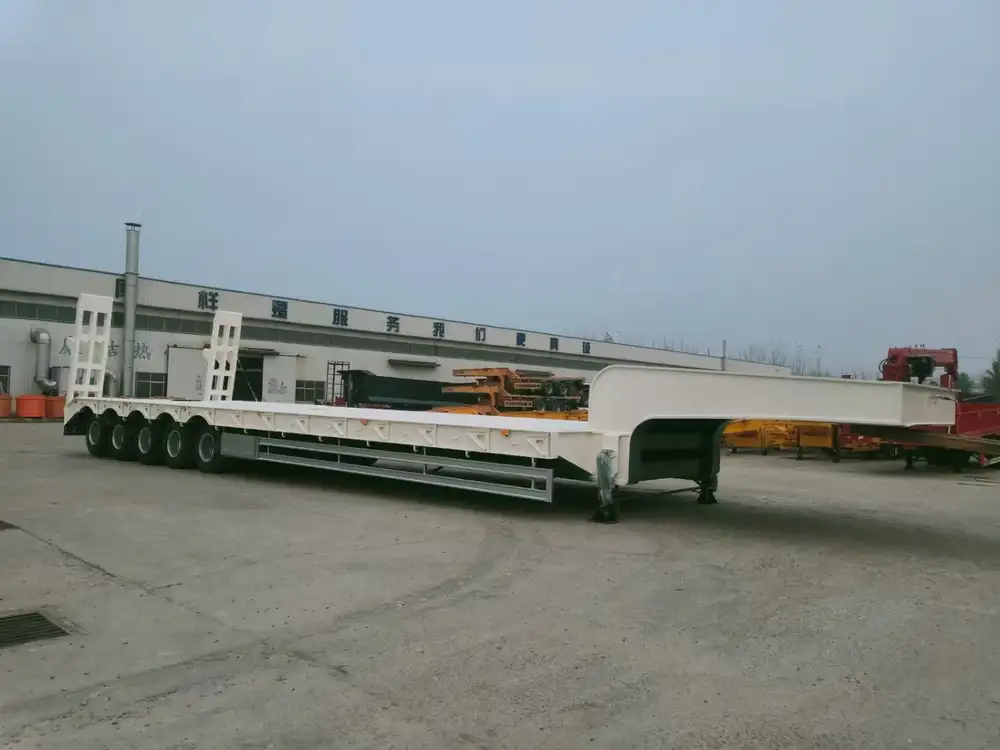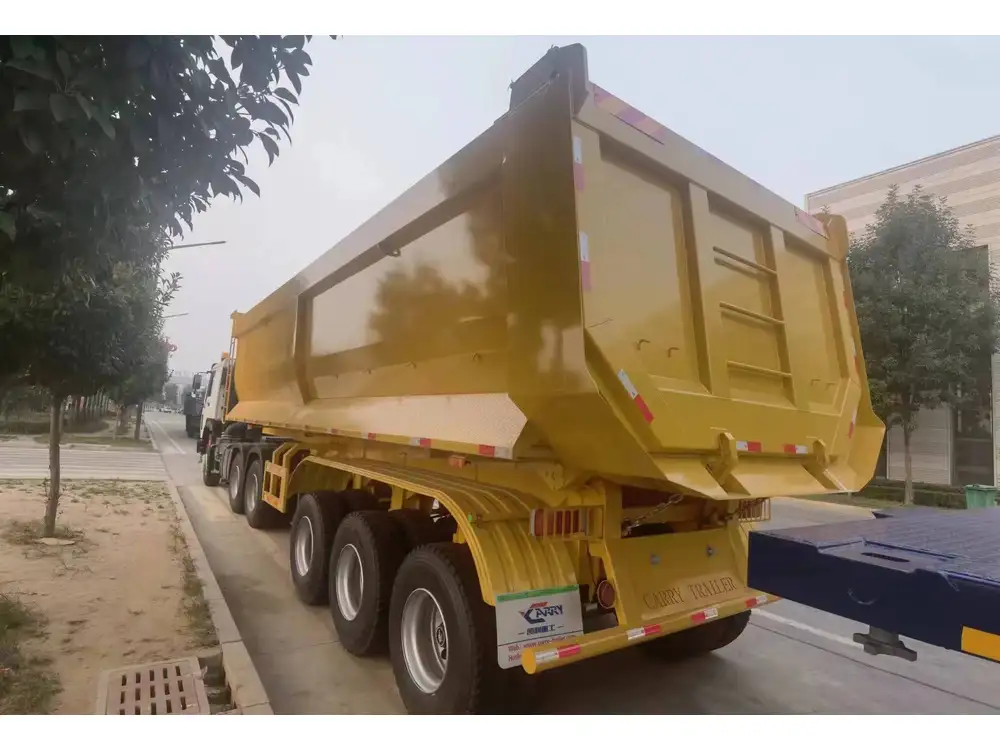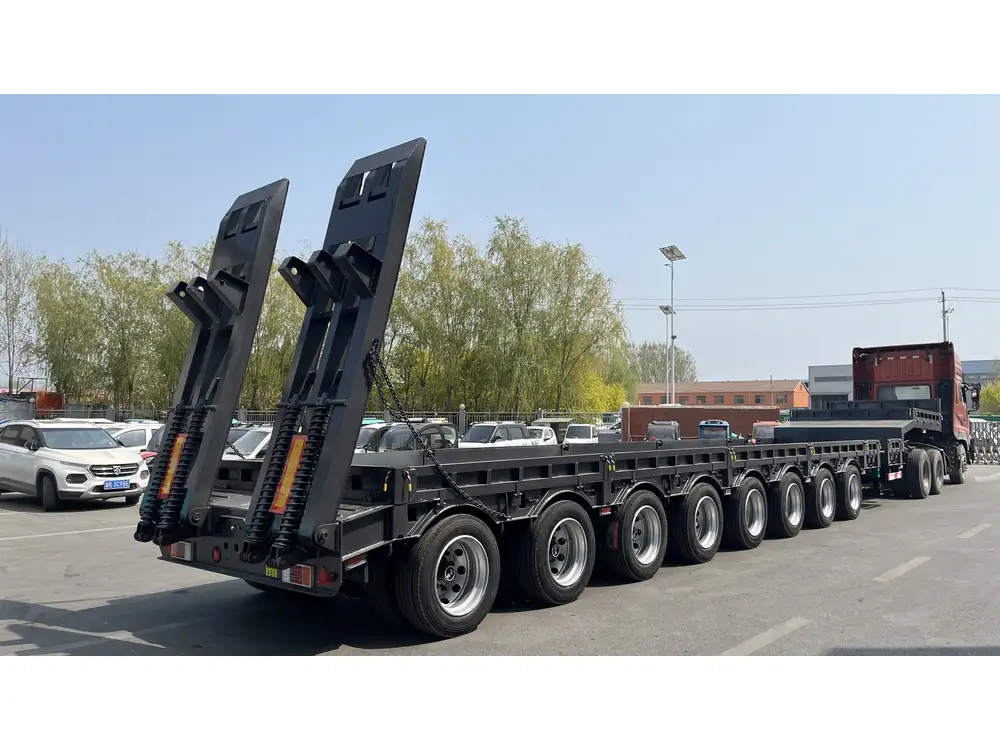When it comes to the transportation of goods across distances, semi-trailers stand as an indispensable component of modern logistics. However, one of the most frequently posed questions by fleet managers, logistics coordinators, and those new to the industry often relates to dimensions: What’s a common semi-trailer size? Understanding optimal semi-trailer sizes can make a significant difference in freight efficiency, regulatory compliance, and overall operational productivity. In this article, we will dissect various semi-trailer sizes, their common applications, and how to choose the right size for specific transportation needs.
Overview of Semi-Trailer Dimensions
The semi-trailer itself can be defined in simple terms: a trailer without a front axle that must be towed by a semi-truck. However, the diversity in its sizes, configurations, and types can create a minefield of choices for manufacturers and businesses alike. To streamline the selection process, we will categorize the common sizes and provide insight into their respective applications.
Common Sizes of Semi-Trailers
| Trailer Type | Length (ft) | Width (ft) | Height (ft) | Common Payloads |
|---|---|---|---|---|
| Dry Van | 53 | 8.5 | 13.5 | General freight, pallets, boxed goods |
| Flatbed | 48-53 | 8.5 | 5-8 | Heavy machinery, lumber, building materials |
| Refrigerated (Reefer) | 53 | 8.5 | 13.5 | Perishable goods, pharmaceuticals |
| Tanker | 40-50 | 8.5 | Varies | Liquid commodities, chemicals, fuels |
| Step Deck | 48-53 | 8.5 | 10-11 | Overheight loads, machinery |
| Auto Transport | 7-9 vehicles wide | 8.5 | 6.5-8 | Automobiles, trucks |

Detailed Specifications
Dry Van Trailers
- Length: Typically 53 feet.
- Width: Standard width is 8.5 feet.
- Height: Generally around 13.5 feet.
- Applications: These trailers are designed for general freight and shield cargo from the elements. They are ideal for transporting boxed goods and pallets, making them one of the most versatile options.
Flatbed Trailers
- Length: Commonly found in 48 to 53-foot sizes.
- Width: Consistent at 8.5 feet.
- Height: Height is variable, ranging from 5 to 8 feet, but cargo may exceed this due to the open nature of flatbeds.
- Applications: Perfect for loading heavy machinery, lumber, and large construction materials. The absence of walls allows for easy loading from all sides, making them a favorite for loads that require crane or forklift assistance.
Refrigerated Trailers (Reefers)
- Length: Generally 53 feet.
- Width: 8.5 feet.
- Height: A similar height to dry vans at 13.5 feet.
- Applications: Essential for transporting perishable items and pharmaceuticals. These trailers are temperature-controlled, ensuring the integrity of sensitive cargo throughout the journey.
Tanker Trailers
- Length: Varies between 40 and 50 feet.
- Width: 8.5 feet.
- Height: Specification varies depending on the freight.
- Applications: Designed to haul liquid goods like fuels, chemicals, or food products. Tankers come with specialized construction to handle volatile materials safely.
Step Deck Trailers
- Length: Typically between 48 to 53 feet.
- Width: Standard 8.5 feet.
- Height: Adjustable height ranging from 10 to 11 feet.
- Applications: Ideal for hauling overheight loads due to the lower deck height. Commonly used in transporting heavy machinery and equipment.
Auto Transport Trailers
- Length: Usually designed to carry 7-9 vehicles.
- Width: Standard 8.5 feet.
- Height: Ranges from 6.5 to 8 feet.
- Applications: Specialized equipment for transporting cars, trucks, and other vehicles. Auto transporters come in open or enclosed variations.
Regulatory Considerations
When choosing a semi-trailer size, compliance with local and federal regulations is non-negotiable. The Federal Highway Administration (FHWA) sets parameters for vehicle dimensions to ensure road safety and infrastructure integrity.
Key Regulations:
- Length Limits: Typically, a semi-trailer can be a maximum of 53 feet in length in most U.S. states.
- Width Limitations: Generally capped at 8.5 feet; however, some states allow a broader width for certain types of trailers.
- Height Restrictions: A maximum of 13.5 feet is allowable for standard trailers on most highways.
Understanding these regulations is critical not only for compliance but also for optimizing your fleet’s operations.
Factors Influencing Semi-Trailer Size Selection
Selecting the appropriate semi-trailer size isn’t merely a matter of preference. Several factors come into play:

Load Type and Weight
First and foremost, the type of goods being transported influences trailer choice. Different payloads require tailored professional handling:
- Heavy Machinery: Opt for Flatbed or Step Deck trailers.
- Perishable Goods: Refrigerated trailers are essential for maintaining temperature.
- Large Boxes or Pallets: A standard Dry Van measures up well in these cases.
Route and Distance
The terrain and length of the route can significantly impact the choice of a semi-trailer. Short-haul trips may employ smaller or more maneuverable trailer types, while long-haul routes typically favor larger capacity options. Moreover, state-specific regulations concerning weight limits and dimensions may affect the choice as well.
Fuel Efficiency
Efficiency plays a significant role in the type of trailer selected. Larger trailers may not always be best due to fuel consumption; thus, a thorough cost analysis may reveal that a slightly smaller trailer could ultimately save money in operational costs.

The Importance of Configuration
The configuration of a semi-trailer can also determine suitability for specific applications. Whether it be a single axle or multi-axle setup, different configurations affect weight distribution, stability, and cargo flexibility.
- Single-Axle Trailers: Generally lighter and suited for less substantial loads.
- Dual-Axle Trailers: Better suited for heavier payloads, often seen with flatbed and dry vans.
- Multi-Axle Trailers: Essential for heavy-haul applications, allowing for increased load distribution.
Choosing the Right Size for Your Business
Identifying the correct size of semi-trailer ultimately comes down to evaluating business requirements and operational expectations. An analytical approach is advisable.
Steps to Determine Ideal Trailer Size:
- Assess Load Requirements: Consider the typical cargo weight, size, and type.
- Evaluate Route Conditions: Identify if you will be traveling on urban roads, highways, or varied terrains.
- Understand Compliance Needs: Align your choice with the specific regulations that apply to your operational area.
- Determine Budgetary Constraints: Factor in not just the initial purchase cost, but also ongoing operational and maintenance costs.

Conclusion: Maximizing Efficiency with the Right Semi-Trailer Size
In the competitive world of logistics and transportation, selecting the right semi-trailer size can significantly impact efficiency and productivity. By understanding the various sizes, their applications, and associated regulations, manufacturers and fleet managers can make informed decisions that streamline operations, enhance compliance, and ultimately boost profitability. Armed with the knowledge of common semi-trailer sizes and their specifications, your organization can navigate the complexities of the transportation industry with greater confidence. As you assess your needs, let every dimension, every weight consideration, and every regulatory detail guide your journey to selecting the perfect semi-trailer that propels your business forward.



